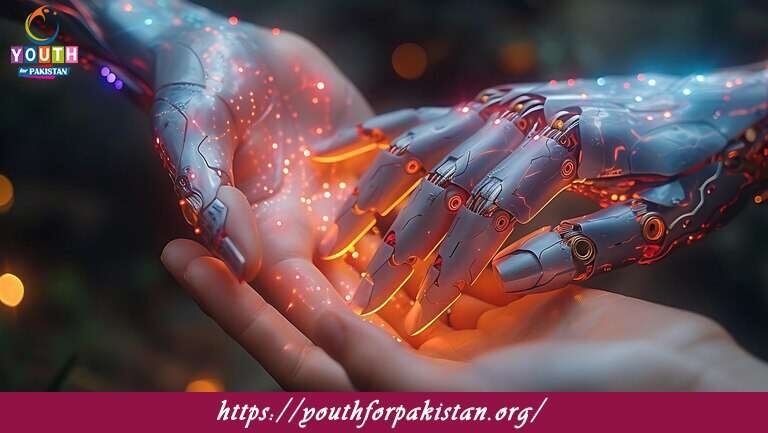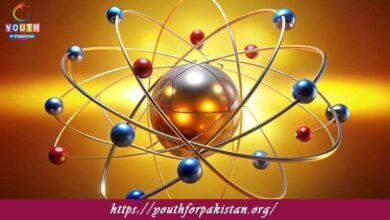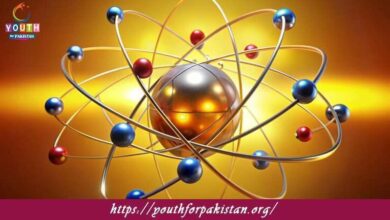9th Class Biology Chapter 7 MCQs with Answers

Understand how energy flows in living systems with “Bioenergetics MCQs” for 9th-class biology. This chapter highlights photosynthesis, respiration, and energy transformations. These MCQs will help you grasp the principles of ATP generation and energy utilization, making exam preparation engaging and straightforward.
What is the primary source of energy for most living organisms?
a) Glucose
b) Proteins
c) Lipids
d) Nucleic acids
Which molecule is commonly referred to as the “energy currency” of the cell?
a) ATP
b) DNA
c) RNA
d) Glucose
The process by which cells extract energy from glucose in the presence of oxygen is called:
a) Photosynthesis
b) Glycolysis
c) Fermentation
d) Cellular respiration
During cellular respiration, glucose is broken down into:
a) Oxygen and carbon dioxide
b) Water and carbon dioxide
c) ATP and oxygen
d) ATP and carbon dioxide
What is the total number of ATP molecules produced from one molecule of glucose during cellular respiration?
a) 2 ATP
b) 36 ATP
c) 38 ATP
d) 40 ATP
Which stage of cellular respiration occurs in the cytoplasm and does not require oxygen?
a) Glycolysis
b) Krebs cycle
c) Electron transport chain
d) Pyruvate oxidation
The final electron acceptor in the electron transport chain is:
a) Oxygen
b) Carbon dioxide
c) Glucose
d) NADH
In which organelle does the electron transport chain take place in eukaryotic cells?
a) Nucleus
b) Mitochondria
c) Chloroplasts
d) Endoplasmic reticulum
Which process involves the synthesis of ATP using energy from a proton gradient across a membrane?
a) Glycolysis
b) Krebs cycle
c) Chemiosmosis
d) Fermentation
What is the net gain of ATP molecules produced during glycolysis?
a) 2 ATP
b) 4 ATP
c) 6 ATP
d) 8 ATP
Which type of fermentation occurs in human muscle cells during strenuous exercise when oxygen is limited?
a) Lactic acid fermentation
b) Ethanol fermentation
c) Alcoholic fermentation
d) Citric acid fermentation
The process of converting light energy into chemical energy in plants is known as:
a) Cellular respiration
b) Photosynthesis
c) Fermentation
d) Glycolysis
In photosynthesis, oxygen is released as a byproduct during:
a) The light-dependent reactions
b) The Calvin cycle
c) Glycolysis
d) The Krebs cycle
The light-absorbing pigments in chloroplasts responsible for capturing solar energy are called:
a) Xanthophylls
b) Chlorophylls
c) Carotenoids
d) Phycobilins
During the light-dependent reactions of photosynthesis, water molecules are split, releasing:
a) Oxygen and ATP
b) Carbon dioxide and ATP
c) Oxygen and NADPH
d) Carbon dioxide and NADPH
The Calvin cycle is responsible for:
a) Absorbing light energy
b) Producing ATP
c) Fixing carbon dioxide into glucose
d) Splitting water molecules
Which organelle is the site of photosynthesis in plant cells?
a) Mitochondria
b) Nucleus
c) Chloroplasts
d) Endoplasmic reticulum
The process by which plants convert light energy into chemical energy in the absence of oxygen is called:
a) Cellular respiration
b) Photosynthesis
c) Fermentation
d) Glycolysis
The energy to convert ADP to ATP during photosynthesis comes from:
a) Light energy
b) Heat energy
c) Chemical energy
d) Kinetic energy
The final product of the Calvin cycle is:
a) Glucose
b) Water
c) Carbon dioxide
d) ATP
In which part of the chloroplast do the light-dependent reactions occur?
a) Thylakoid membrane
b) Stroma
c) Outer membrane
d) Inner membrane
Which molecule acts as an electron carrier during cellular respiration and photosynthesis?
a) NADPH
b) NADH
c) FADH2
d) ADP
What is the function of NADPH in photosynthesis?
a) To transfer high-energy electrons to the Calvin cycle
b) To transfer high-energy electrons to the electron transport chain
c) To convert ATP to ADP
d) To produce oxygen during the light-dependent reactions
The light-independent reactions of photosynthesis occur in the:
a) Stroma
b) Thylakoid membrane
c) Inner membrane
d) Outer membrane
Which molecule is the primary product of the light-dependent reactions in photosynthesis?
a) Glucose
b) Oxygen
c) NADPH
d) ATP
In which part of the chloroplast does the Calvin cycle take place?
a) Thylakoid membrane
b) Stroma
c) Outer membrane
d) Inner membrane
During photosynthesis, carbon dioxide is reduced to form:
a) Water
b) Glucose
c) Oxygen
d) ATP
The process of capturing light energy to convert water and carbon dioxide into glucose is known as:
a) Glycolysis
b) Photosynthesis
c) Fermentation
d) Cellular respiration
Which of the following organisms carries out photosynthesis?
a) Animals
b) Fungi
c) Bacteria
d) Plants
The primary pigment involved in capturing light energy for photosynthesis is:
a) Chlorophyll
b) Carotenoid
c) Xanthophyll
d) Phycobilin
What is the main function of the light-dependent reactions in photosynthesis?
a) To produce glucose
b) To produce ATP and NADPH
c) To convert carbon dioxide into oxygen
d) To fix carbon dioxide
The process of splitting water molecules during the light-dependent reactions of photosynthesis is known as:
a) Photolysis
b) Glycolysis
c) Fermentation
d) Krebs cycle
The Calvin cycle is also known as:
a) Dark reactions
b) Light reactions
c) Fermentation reactions
d) Glycolysis reactions
During photosynthesis, the oxygen released as a byproduct comes from:
a) Carbon dioxide
b) Water
c) Glucose
d) ATP
The energy needed to drive the synthesis of ATP during photosynthesis comes from:
a) Oxygen
b) Carbon dioxide
c) Light energy
d) Glucose
Which type of fermentation occurs in yeast cells, producing alcohol and carbon dioxide?
a) Lactic acid fermentation
b) Ethanol fermentation
c) Alcoholic fermentation
d) Citric acid fermentation
In cellular respiration, the majority of ATP is produced during:
a) Glycolysis
b) The Krebs cycle
c) Fermentation
d) The electron transport chain
The process by which cells extract energy from glucose without the presence of oxygen is called:
a) Photosynthesis
b) Glycolysis
c) Fermentation
d) Cellular respiration
The energy currency used by cells to perform work is:
a) NADH
b) NADPH
c) ATP
d) ADP
Which of the following is a product of the Krebs cycle?
a) ATP
b) Carbon dioxide
c) Glucose
d) Water
During glycolysis, one molecule of glucose is converted into:
a) Two molecules of pyruvate
b) Two molecules of carbon dioxide
c) Two molecules of water
d) Two molecules of ATP
Which of the following is NOT a part of cellular respiration?
a) Glycolysis
b) Krebs cycle
c) Photosynthesis
d) Electron transport chain
Which stage of cellular respiration produces the majority of NADH and FADH2?
a) Glycolysis
b) Krebs cycle
c) Electron transport chain
d) Pyruvate oxidation
During cellular respiration, pyruvate is converted into acetyl-CoA in a process called:
a) Glycolysis
b) Krebs cycle
c) Fermentation
d) Pyruvate oxidation
The first step of cellular respiration, where glucose is split into two molecules of pyruvate, is called:
a) Glycolysis
b) Krebs cycle
c) Fermentation
d) Electron transport chain
What is the purpose of the Krebs cycle in cellular respiration?
a) To produce ATP
b) To convert glucose into pyruvate
c) To generate NADH and FADH2
d) To release oxygen as a byproduct
The molecule that serves as the final electron acceptor in the electron transport chain is:
a) Water
b) Oxygen
c) Carbon dioxide
d) Glucose
Which stage of cellular respiration produces the most ATP molecules?
a) Glycolysis
b) Krebs cycle
c) Fermentation
d) Electron transport chain
Which of the following is NOT a product of cellular respiration?
a) Carbon dioxide
b) Water
c) Glucose
d) ATP
During cellular respiration, the electron transport chain is located in the:
a) Mitochondrial matrix
b) Mitochondrial inner membrane
c) Mitochondrial outer membrane
d) Mitochondrial intermembrane space
The process of converting glucose into pyruvate during glycolysis occurs in the:
a) Cytoplasm
b) Mitochondrial matrix
c) Mitochondrial inner membrane
d) Mitochondrial intermembrane space
What is the purpose of the electron transport chain in cellular respiration?
a) To produce ATP
b) To convert glucose into pyruvate
c) To generate NADH and FADH2
d) To release oxygen as a byproduct
Which molecule is the final product of glycolysis?
a) Oxygen
b) Carbon dioxide
c) Pyruvate
d) ATP
In cellular respiration, the carbon atoms from glucose end up as:
a) Water
b) Carbon dioxide
c) ATP
d) NADH
What is the net gain of ATP molecules produced during glycolysis?
a) 2 ATP
b) 4 ATP
c) 6 ATP
d) 8 ATP
Which of the following processes does NOT occur during cellular respiration?
a) Glycolysis
b) Krebs cycle
c) Electron transport chain
d) Calvin cycle
In cellular respiration, where is the majority of ATP produced?
a) Glycolysis
b) Krebs cycle
c) Electron transport chain
d) Pyruvate oxidation
The process by which cells convert glucose into pyruvate is known as:
a) Glycolysis
b) Photosynthesis
c) Fermentation
d) Cellular respiration
In which organelle does cellular respiration occur in eukaryotic cells?
a) Nucleus
b) Mitochondria
c) Chloroplasts
d) Endoplasmic reticulum
The molecule that carries high-energy electrons during cellular respiration is:
a) NADH
b) NADPH
c) FADH2
d) ADP
If you are interested to enhance your knowledge regarding Physics, Chemistry, Biology, and Computer please click on the link of each category, you will be redirected to dedicated website for each category.





